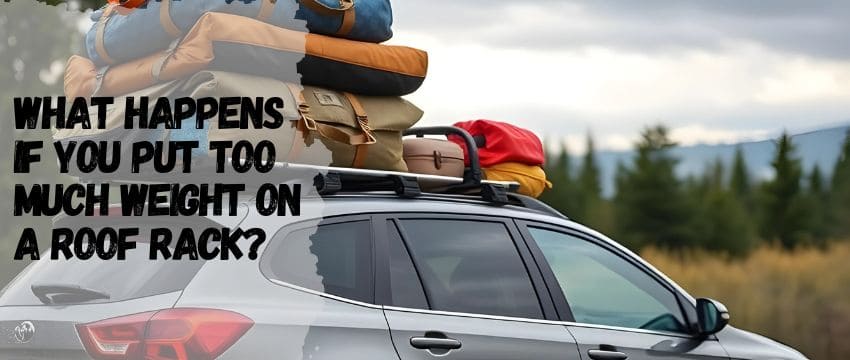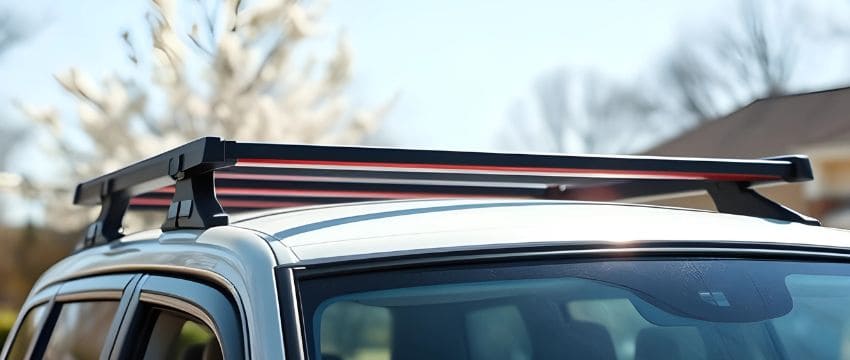It is required to understand how much weight you can load on the car roof or in a rooftop cargo box because of safety concerns. If you are interested in using a rooftop cargo carrier or buying a cargo box for outdoor needs, you must know how much weight you can load on the car roof.
Why do you need to know the weight-loading limit of your car roof?
Outdoor enthusiasts may wish for more storage space in their vehicles to load enough luggage, gear, and equipment for different outdoor journeys. As a result, they can use rooftop cargo carriers to create extra room on the car roof to carry things on the roads for other outdoor purposes. Building a rooftop cargo management system is not a simple job, so you should seek help from experts to avoid mistakes. We are here to assist, don’t worry.
Related Topic: How to choose the best rooftop cargo carriers?
We don’t know what car you drive, so it is hard to tell the exact number you should follow when it comes to the roof loading limit. However, we know where you can find the limit, so you can follow this content to learn the accurate ways to find roof-loading limits for different vehicles: sedans, Vans, SUVs, and pickup trucks. We will gradually cover all the car models with their roof-loading limits.
Example:
Most vehicles have two types of roof-loading limits: dynamic weight limit and static weight limit. Most cars’ active roof-loading limit is between 75 lbs and 160 pounds, and when calculating the static limit, you can 5 – 8 times the active limit to get the approximate number of stable roof-loading rates (when the car is parked or not in motion).
If you add extra weight on top of your car, your car’s gravity center becomes higher; consequently, you must avoid sharp turns. Otherwise, you can find difficulties when accelerating or braking compared to previous times without rooftop cargo carriers. Thus, you have to change your driving habits after installing roof-mounted cargo carriers.
Overloading the roof-mounted cargo carriers is prohibited by most car manufacturers, so you should listen and follow.
What can happen when overloading the car roof? If someone packs 100kg of items on top of his car, but his car’s roof-loading limit is around 70 kg. First, the action of overloading the car roof voids the car manufacturer’s warranty, so if unexpected incidents happen and cause damages, the insurance company or factory will not cover the fee for repair. Second, overloading the car roof can make the vehicle hard to control when turning, braking, and accelerating. When making turns, he must use a larger angle to avoid rollover. He must use long brakes after loading things on top of his car, especially under overloading conditions. If he operates his car like usual with overloaded rooftop cargo carriers, he may cause accidents and harm himself or other drivers to injury or death.
You can learn from his mistakes and not overload the car roof to stay safe and control the dynamic loading weight when roof racks are on duty. You should always check the car manual to look for the roof loading limit and follow the instruction to use roof-mounted cargo carriers: cargo boxes, baskets, bags, kayak carriers, bike racks, rooftop tents, and more.
Differences Between Dynamic and Static Roof Weight Limits
Dynamic Roof Weight Limit
You can find Dynamic Limit in the car’s manual. The Dynamic roof loading limit tells how much weight you can load above the roof racks when your vehicle is in motion. Your car’s roof load faces forces from all directions from wind or other natural elements, so more weight will destabilize your vehicle under any speed conditions.
Static Roof Weight limit
If you use rooftop cargo tents, you should know your car’s static roof loading limit. The weight that a parked vehicle can support on its roof is called the static roof weight limit. It is often 5 – 8 times greater than the dynamic loading rate. For example, a car’s dynamic rate is 70 kgs, so the car’s static rate is around 350 kgs to 560 kgs (depending on the vehicle type – large vehicles hold more).
How Much Weight Can Cargo Boxes Support?
Cargo Boxes are hardshell roof-mounted cargo carriers that are popular among outdoor lovers, and these boxes are in different sizes and shapes. Most cargo box manufacturers set loading limits for their boxes and recommend users follow the loading rate to drive safely.
We use cargo boxes as examples to show the correct method of calculating a car’s actual roof loading limit.
First, we assume that a car’s roof loading limit is 160 lbs. Second, we need a pair of crossbars to mount a cargo box, so we put two roof bars (15 pounds) on the car roof to create a platform for mounting a cargo box (25 lbs). Third, we can find that the actual roof loading limit is 160 – 15 – 25 = 125 pounds. Although the cargo box’s loading limit is 140 lbs, we only can pack 125 pounds of luggage in the box.
Most Popular Rooftop Cargo Boxes and Their Loading Limit:
Off-Road Conditions:
When driving your car on unpaved territories, you should pay attention and decrease 15% to 20% of the actual roof loading for safety concerns. For example, after calculation, you find out that the actual dynamic roof loading limit is 130 lbs, and you better load up to 130 – 130 x 20% = 104 pounds of items on the roof racks.
Most manufacturers don’t recommend off-roading with roof-mounted cargo carriers, so you better follow what experts say. If you have more concerns about these tips, you can always contact the manufacturer for explanations and suggestions.
Conclusion
Today, more and more people choose to drive their cars for road journeys or other outdoor adventures. Thus, the original car loading space is far from enough, and most outdoor enthusiasts want to build their custom cargo management system for transporting extra luggage or gear on top of at the back of their vehicles.
Before constructing a cargo management system, you should learn and prepare some knowledge for better results. This article gives you a clear understanding of car roof-loading limits.
Our team is creating outdoor-gear relevant articles with passion. If our articles can help you to find the correct solutions for your questions, we will be happy about that. In the content creation process, we usually collect accurate and useful information online or offline to compile our content in an organized way. Consequently, we can guarantee that you can discover some expected answers to your questions. We appreciate your time on our site.







